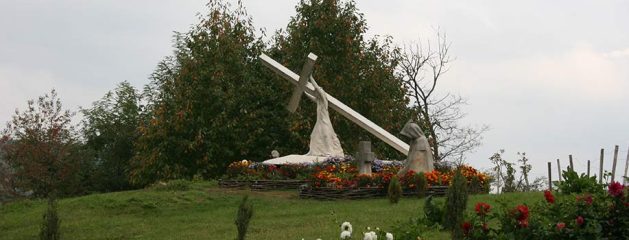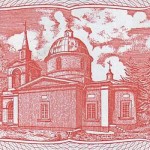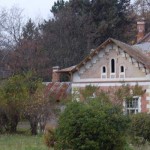Чтобы попасть в любой монастырь, нужно подниматься в гору. Святые обители всегда располагались ближе к солнцу, ближе к Богу… В Молдове часть монастырей – в прекрасных Кодрах, загадочных, манящих к себе лесах. Вернее, на горе, окруженной лесами. Здесь легко дышится. Нет шума автомобилей. Не хочется отвечать на звонки по мобильному телефону. Тянет вдыхать напоенный летом воздух и думать о высоком.
Вода и брынза для путника и туриста
Монастырь Хынку из женских обителей Молдовы, пожалуй, посещают чаще всего. Это красивейший и самый большой монастырь нашей республики. Сюда съезжаются туристы и паломники из разных стран мира.

Монастырских построек от ворот не видно: они спрятались в лесах. Только купола, поблескивающие над верхушками деревьев, и строительный кран выдают месторасположение обители. Первое, на что мы обращаем внимание, — лавка, где продается брынза, сделанная руками монашек, с особым вкусом, созданная по древним рецептам. В той же лавке – вода из местного источника. Ученые установили, что родниковая вода обладает повышенным содержанием минералов, то есть, полезна для здоровья. Возможно, при выборе места для монастыря, наличие целебного источника было не последним аргументов в пользу этой территории. Здесь же на витрине – куриные яйца. Тоже особые. Послушницы разводят редкие породы японских кур, итальянских и голландских уток. В здешнем курятнике петухи размером с добрую индюшку. Монастырь Хынку со своим птичником даже в традиционной ярмарке в Ниспоренах (районный центр неподалеку от монастыря) участвовали. Удивили всех.
Проходим метров 100. Сначала подумали: вот он, — монастырь. Но оказалось, что это только современная часть его. Остальные строения – выше, «спрятаны». А пока мы видим только четырехэтажное современное здание со стеклопакетами, с застекленными балконами, заставленными цветочными горшками. Здесь живут монашки. «Гостиница «отдыхает», – замечает моя коллега. Действительно, многие гостиницы позавидовали бы такому размаху. Кстати, паломник и турист может здесь остановиться на время и пожить.
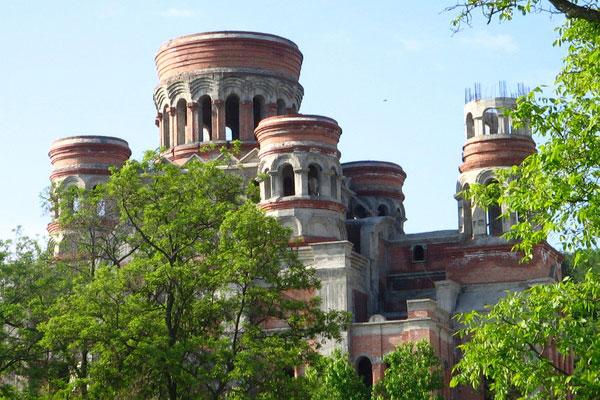
Вот почему здесь строительный кран! Полным ходом идет строительство церкви – мощное, высокое сооружение. Пожалуй, эта церковь будет самой высокой в Молдове. Уже можно угадать, какой проект создал архитектор. Уже видны очертания строения. Хотя до окончания работ еще далеко.
У строящейся церкви на горе – каменное изваяние: склонила колена святая Параскева, та, в честь которой назван монастырь. Неподалеку – Иисус, всегда несущий свой тяжелый крест. Возле памятников – цветы. Это место здесь почитают.
Поднимаемся по ступенькам в старую часть монастыря. Какие здесь цветы! Признаюсь, таких анютиных глазок я нигде у нас в республике не видела. Желтенькие, бархатные, разных цветов и формы. Видно, у монашек талант выращивать цветы необыкновенной красоты.
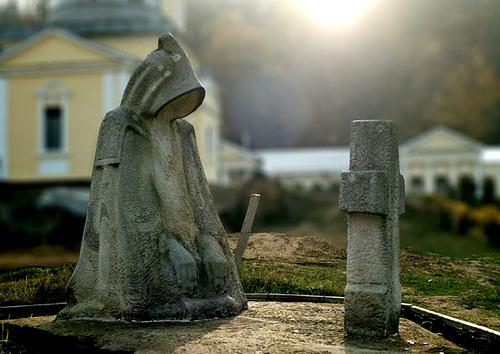
Мы на последней ступеньке. Открывается вид монастыря – открываются рты нашего «десанта». Увидеть такую красоту мы и не мечтали. Старая скромная церковь, кельи, особняк для проведения конференций. Строения удачно реставрированы, а некоторые перестроены так, что кажется, им пару веков, не меньше. Сочетание старины, уюта, современности. Стены зданий выкрашены в модный желтый цвет, поэтому кажется, что солнце здесь поселилось навсегда. Ухоженные клумбы, ровные бордюры, фонтан. Уезжать отсюда не хочется.
Чтобы пройтись по аллеям и рассмотреть всю эту красоту, надеваем юбки, которые здесь выдают многим туристкам. Монашки не обращают на нас внимание: к посетителям здесь привыкли. И только одна пожилая послушница, читавшая книгу, сидя на ступеньках у келий, заводит с нами разговор. С гордостью сообщает о детях монашек, которые приехали сюда очиститься и отдохнуть. Сообщает, что в обители больше 100 монашек и послушниц, самой юной из которых – 14 лет. Самой пожилой – за 80-т. Подробно рассказывает о детском доме для сирот в Кишиневе, который открыт 8 лет назад и содержится монастырем. В нем проживает около 60-ти детей, в возрасте от 3 до 18 лет. Говорит и о епископе Ниспоренском, викарии Кишиневской митрополии и всея Молдовы Петре, который руководит и монастырем, и детским домом. Настоятельницей здесь – игуменья Параскева (Казаку). На прощанье монашка напоминает, что любой посетитель может попросить рассказать о монастыре гида, – есть тут у одной послушницы такие полномочия.

Раньше здесь был скит
Монастырь основан с 1678 году, близ речки Когылник. Правда, поначалу, обитель называлась скитом. Основал ее молдавский боярин, стольник Михаил Хынку. Согласно легенде, он с дочерью, спасаясь от татар, попал в это место. Тогда они загадали: если выживут, построят здесь монастырь. Боярин свое обещание выполнил. А его дочь приняла монашество под именем Параскевы и поселилась в этом ските. Стольник Хынку для поддержания скита даже пожертвовал принадлежавшей ему вотчиной Сакарень – 1,040 десятин земли, сплошь покрытой лесом, пригодным для строительства.
Вот, что пишет «Альманах «Бессарабца» в 1906 г.: «Обитательницы скита, постоянно тревожимые татарами, вынуждены были во второй половине XVШ века переместиться в более безопасные места. Скит был оставлен и приходил в разрушение. Тогда, по просьбе фамилии Хынку (скорее всего, потомков – прим.авт.), иеромонах Варлаам из Варзарештского скита взялся заселить опустылую обитель. Он исправил плетневую церковь и кельи, обнес весь скит плетневою оградою и собрал туда на жительство немногочисленную братию. Вскоре число монашествующих стало увеличиваться и скит привел свое хозяйство в хорошее состояние: производил посевы, развел большой фруктовый сад и виноградники, обзавелся крупным рогатым скотом и овцами».
Из альманаха мы узнаем, что скит поддерживали болгарские колонисты, питавшие уважение к святой Параскеве. Она сама была родом из Сербии, а ее мощи были перенесены в Тырново при царе Болгарии и Сербии Иоанне Асене. Но позже султан за 300 кошельков золота позволил молдавскому воеводу Василию Лупулу перенести мощи в Яссы.
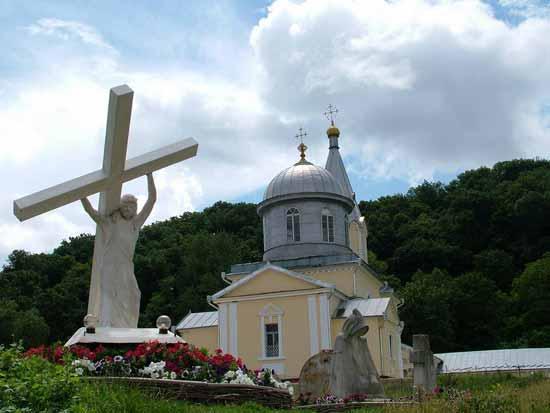
Скит переживал не лучшие времена и в начале 19-го века. Если до 1808-го обитель беспрепятственно владела землями, пожертвованными боярином Михаилом Хынку, то вдруг на нее стали претендовать сначала помещик села Кристешты, потом – кишиневский обыватель (монастырь располагался на территории Кишиневского уезда). Начались тяжбы. Монахам удалось отстоять земли. А в 30-х годах 19-го века при настоятеле игумене Досиое обитель получает статус монастыря.
Вот как выглядел монастырь Хынку 100 лет назад (описание из «Альманаха «Бессарабца»): «В монастыре две церкви: одна холодная каменная с колокольней, выстроена на месте прежней деревянной в 1835 году игуменом Досиоеем, родом болгарином, во имя преподобной Параскевы. Церковь довольно красива, покрыта железом, имеет достаточную ризницу и утварь. Другая – теплая, каменная же, выстроенная в 1841 году во имя Успения Пресвятой Богородицы. Она расположена в середине каменного, весьма красивого корпуса, покрытого драницей, в котором находятся: трапеза, гостиная, настоятельская и девять братских келий. Спереди этого корпуса – 16 четырехугольных колонн и 12 круглых каменных столбов. Близ корпуса находится каменный фонтан, построенный в 1835 году. Отдельно от корпуса стоит валькованный, крытый драницей, флигель с 12 отделениями, занятый братею и с тремя крыльцами с лицевой стороны. Еще имеется шесть отдельных домов, с 4 отделениями каждый, и кухня с пекарней. При монастыре – амбар, винокурня, столярная, кузница и другие хозяйственные здания, а вокруг монастыря – 5 фонтанов, в которые вода проведена при помощи глиняных труб, за 300 сажень».

Стоит заметить, что большинство строений из описываемых сохранились. И если не знать, в каком году составлено описание, то вполне можно предположить, что это заметки современного туриста.
Монастырь славился своей богатой библиотекой. Да и сегодня здесь собираются на семинары и конференции, обсуждая научные темы.
Обитель была закрыта с 1956 по 1990 годы: здесь располагался дом отдыха Министерства здравоохранения. А в начале 90-х монастырь начал отсчет новейшей истории. Только уже не как мужская обитель, а женская, как и было изначально задумано.
Удалось привести мощи великомучеников. И многие паломники свято верят: стоит прикоснуться к этим мощам, и все недуги пройдут.
В 2000 году монастырь Хынку навсегда увековечил Национальной банк Молдовы на серебряной монете достоинством в 50 леев. Тогда выпустили серию «Монастыри Молдовы». Монеты с изображением обителей сразу растащили нумизматы.
Но лучше знакомиться с монастырями не по открыткам или монетам. Лучше самим отправиться и увидеть обитель. Ведь никакими словами и фотографиями невозможно передать всю красоту и величие, а главное – особых дух, этого монастыря.
Наталья Синявская
English version
The Spirit of St. Parascheva of the Monastery of Hincu
To get to any monastery, one should usually climb a hill. Cloisters are always situated closer to the sun, closer to the Lord… A part of Moldovan monasteries are built in Codru, the beautiful, mysterious, bewitching woods. Or to be more precise, on the hills surrounded with the woods. The air is clean. No noise of automobiles. You don’t even want to answer your mobile phone, but only to inhale the rich summer air and to think great thoughts.
Water and brynza for travellers and tourists
Hincu monastery is perhaps the most visited women’s cloister in Moldova. This is the most beautiful and largest monastery of our republic. Tourists and pilgrims from all over the world come here to admire this place.
The monastic constructions are hidden from the view when you enter through the gate. Only the domes shining in the woods and a crane give up the location of the monastery. The first thing we pay attention to, is a shop, where one can buy brynza made by the nuns. Being prepared according to an ancient recipe, it is especially tasty. Here one can also buy water from the local spring. Scientists have discovered that the cloister’s spring water has a high content of minerals and therefore has a curative effect. Probably the presence of this curative source was one of the most powerful arguments, when choosing this territory for the construction of the monastery. The same shop offers hen’s eggs. They are peculiar too. The novices raise rare breeds of Japanese hens, Italian and Dutch ducks. The cocks in the monastery’s henhouse are as big as a turkey. The cloister even participated in the traditional fair, which was held in Nicporeni (a district center not far from the monastery), and surprised everybody.
We walked about 100 meters. At first we decided that we found the monastery. But it turned out that it was only its modern part. Other structures were ‘hidden’ above. We could only see a four-storey modern building with double-glass panes and glazed balconies filled with flowerpots. The nuns live here. ‘The hotel is at rest’, notices my colleague. Really, many hotels may only dream of such luxury. By the way, any pilgrim or tourist may stop and lodge here for some time.
Now we understand why we saw a crane here! The construction of the church is in full swing. It will be a mighty, high building. Perhaps it will be the highest church in Moldova. One can already guess the architect’s idea. We see the frame, but the construction works are far from being completed.
In front of the church, which is under construction, on the hill there is the stone sculpture of St. Parascheva (who gave her name to the church) standing on her knees. Not far from this sculpture, one can see Jesus bearing a heavy cross. Flowers grow nearby. This is a highly esteemed place.
We are going upstairs to the old part of the monastery. What beautiful flowers are here! I must say that I have never seen such pansies anywhere in our republic – yellow, velvet, of different colors and form. The nuns must have a talent of growing so unusually attractive flowers.
We reach the last step. The view from the top makes us open our mouths. We did not expect to see such a beautiful scene. The old modest church, cells, the private residence for holding conferences. The structures have been restored rather successfully, and some of them are reconstructed in such a manner, that it seems that they are at least several centuries old. A combination of antiquity, coziness, and the present. The walls of the buildings are painted fashionable yellow, and it seems that the sun never leaves this place. Neat flowerbeds, equal borders, the fountain. You would never like to leave this place.
To walk along the paths and to admire all this beauty, we put on the skirts, which the nuns give to many traveling women. The cloistresses do not pay attention to us: they have got used to visitors. And only an elderly lay sister, who was reading a book sitting on the steps of the cells, starts a conversation with us. She proudly tells about the nuns’ children, who had arrived here to get purified and have a rest. She narrates that more than 100 novices live at the monastery, the youngest of which is only 14 years old, and the oldest is more than 80. She describes an orphanage of Chisinau, which began working 8 years ago and is maintained by the monastery. It gives shelter to about 60 children aging from 3 to 18. She tells about the bishop of Nisporeni, the vicar of the Chisinau metropolis and all Moldova, Pyotr, who supervises both the monastery and the children’s home. Mother Superior is Parascheva (Cazacu). When we were leaving, the nun reminded that any visitor could ask the guide, who is one of the novices, to tell about the monastery.
The monastery was once a cell
The monastery was founded in 1678 on the Cogilnic River, though at first it was called a cell. It was established by the Moldavian boyar Mihail Hincu. According to a legend, trying to escape from Tatars, he came to these lands together with his daughter. They promised to each other that if they survived, they would build a monastery here. The boyar fulfilled his promise. And his daughter took the veil under the name of Parascheva and settled in the cell. To keep the monastery, Hincu donated his estate in Sacareni, which included 3 acres of lands covered with woods and suitable for construction.
The Bessarabian Almanac of 1906 tells: ‘The inhabitants of the cell, being constantly disturbed by Tatars, had to move to safer places in the second half of the 18th century. The cell was falling into decay. Then, at request of the Hincu family (they must have been the boyar Hincu’s descendants), the priest Varlaam from the Varzaresti monastery decided to inhabit the lonely cell. He restored and fenced the church and the cells, invited his community, which was then quite small. Soon the number of monks began increasing and the cell turned into a prosperous monastery: the monks gathered in a good harvest, planted a big orchard and vineyards, raised cattle and sheep.
The same almanac tells that the monastery was supported by Bulgarian colonists, who held St. Parascheva in respect. The saint herself was of Serbian ancestry, and her relics were carried to Tirnova during the time of Ivan Asen, the tsar of Bulgaria and Serbia. But later he allowed the Moldavian ruler Vasile Lupu to carry the relics to Iasi for 300 purses of gold.
The monastery had bad times at the beginning of the 19th century. Before 1808, the monastery freely owned the lands donated by Mihail Hincu, but suddenly it became an object of claims of the owner of Cristesti village, and then of a Chisinau inhabitant (the monastery was situated in the territory of the district of Chisinau). This conflict led to numerous disputes. The monks managed to defend their lands. In the 30’s of the 19th century, during the superior hegumen Dosioi, the cell received a status of a monastery.
The Bessarabian Almanac gives the following description of Hincu monastery of the last century: ‘The monastery has two churches: the cold stone church with a bell tower was built at the place of the former wooden one in 1835 by hegumen Dosioi, who was of Bulgarian origin, in honor of St. Parascheva. The church is rather beautiful, has an iron roof, a large vestry and a chapel. Another church, a warm stone one, was built in 1841 in the name of Assumption of the Virgin Mary. It is located in the middle of a stone, rather beautiful structure covered with lath, containing a refectory, a drawing room, the superior’s room and nine cells. In front of the structure, there are 16 quadrangular columns and 12 round stone pillars. Not far from the structure, there is a stone fountain, which was constructed in 1835. Apart from the structure there stands a terete lathed outbuilding with 12 departments for the community and with three porches. Besides, there are six separate houses, each with 4 departments, and a kitchen with a bakery. The monastery has a barn, a distillery, a joiner’s shop, a forge and other utility buildings. In the territory of the monastery there are 5 fountains, the water to which runs along clay pipes from the distance of about 600 meters’.
I should mention that the majority of the described structures has preserved till today. And if you do not to know the year the article was written in, you may think that it is the description of a modern tourist.
The monastery was famous for its rich library. Even today different seminars and conferences on different scientific issues are held here.
The monastery was closed between 1956 and 1990, when it served as the rest house of the Ministry of Health. And from the beginning of the 90’s the new epoch began in the monastery’s history. The only thing is that it is not a man’s monastery any more, but a women’s one, as it was conceived initially.
The monks managed to bring the relics of great martyrs here. Many pilgrims believe that if one only touches them, he will rid himself of any disease.
In 2000, the National Bank of Moldova immortalized the Hincu monastery on a silver 50 lei coin. That year the bank minted the series Monasteries of Moldova. The coins with the images of monasteries were bought up by numismatists at once.
But you should get acquainted with the monasteries not through cards or coins. You should go and see the monastery yourself, since whatever you read or see on photos, you will never understand its beauty and grandeur and especially its spirit.
Natalia Sinyavskaya

